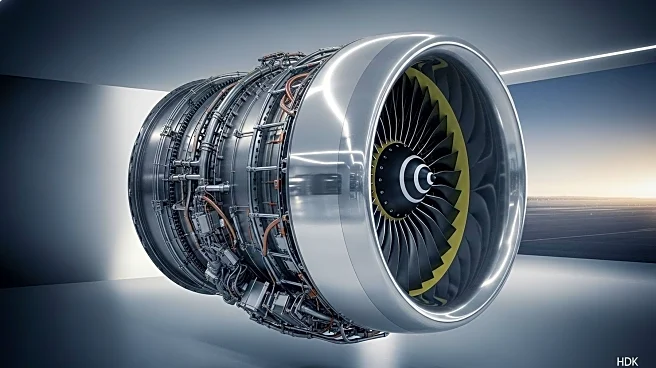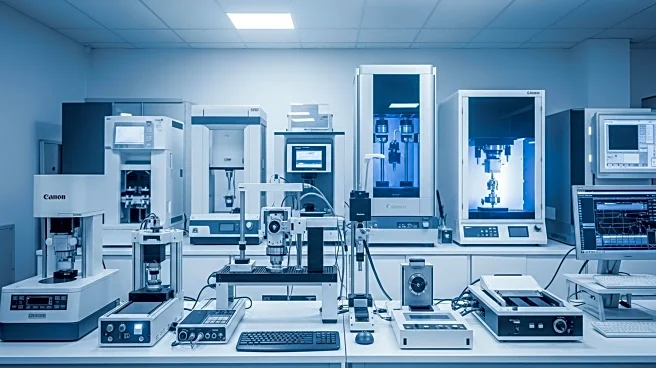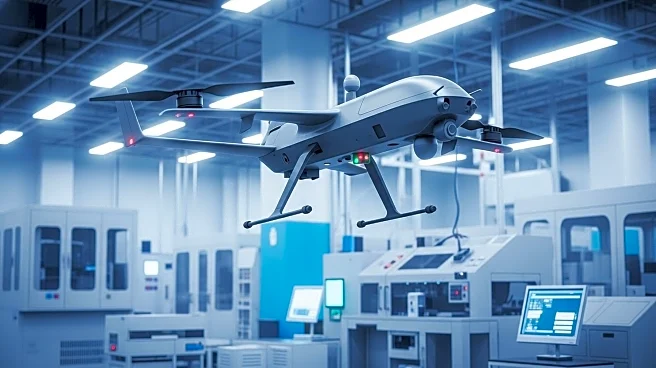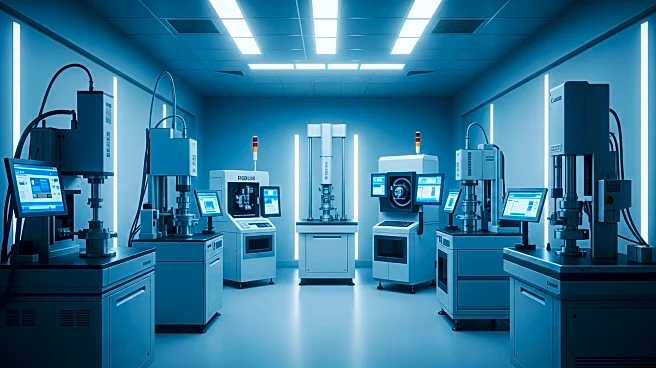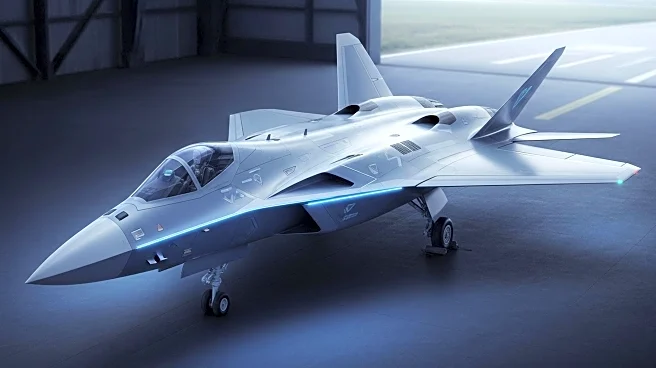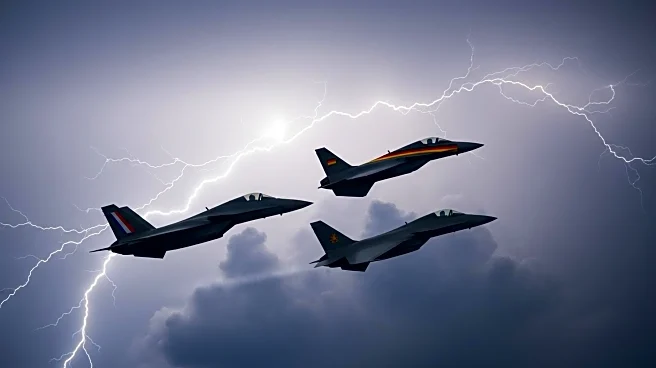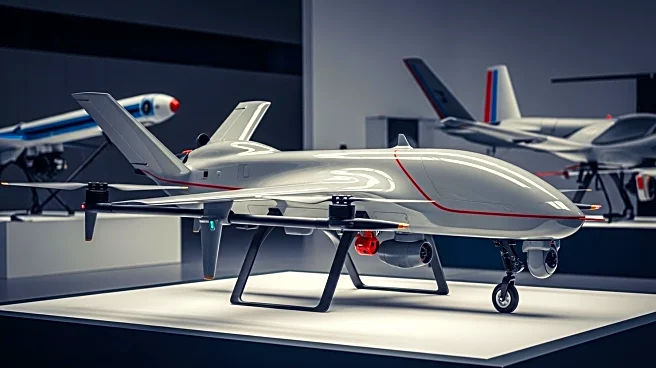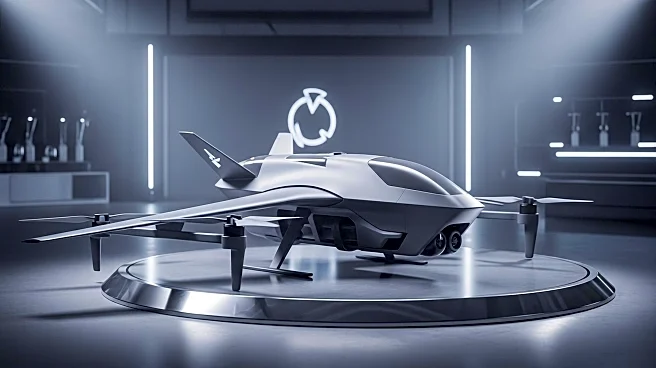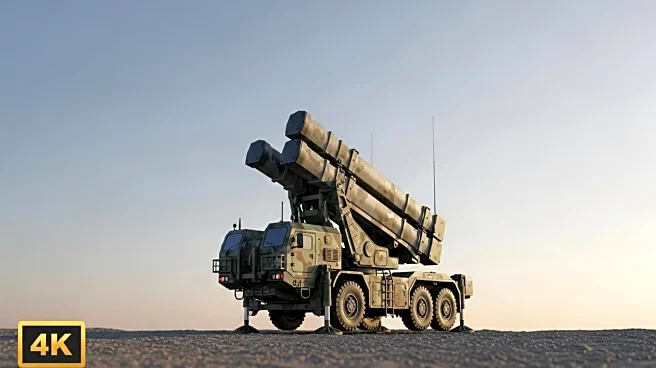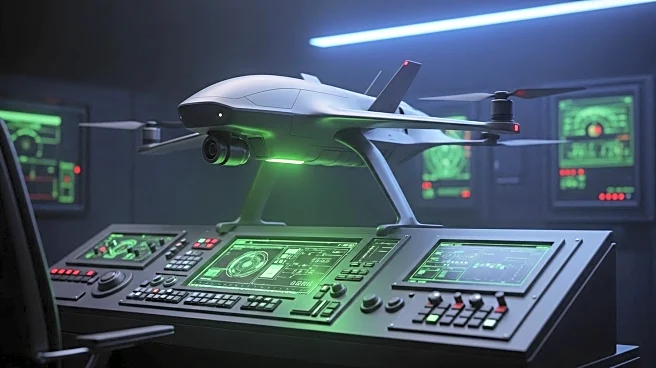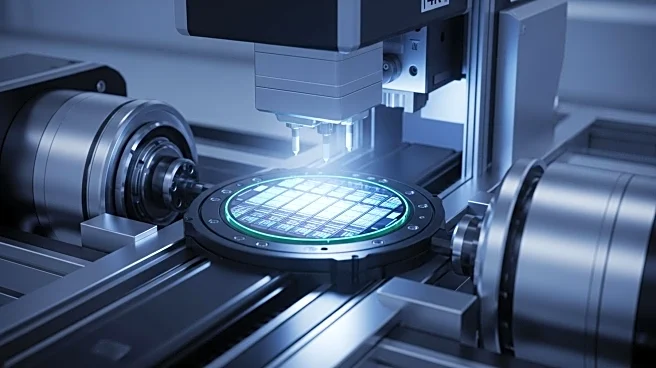What is the story about?
What's Happening?
Pratt & Whitney, a division of RTX, has announced the development of a new family of engines designed to power munitions and Collaborative Combat Aircraft (CCA). The announcement was made on September 22, ahead of the Air & Space Forces Association's 2025 Air, Space & Cyber Conference. The engines, scalable from 500 lb to 1,800 lb of thrust, are being developed by Pratt & Whitney's Gatorworks team, which focuses on speed and affordability in development. Jill Albertelli, president of Pratt & Whitney's Military Engines business, highlighted the scalability and commonality across models, as well as the use of additive manufacturing, as key factors in reducing development and production timelines. Initial testing is planned for later this year, with further testing expected in early 2026.
Why It's Important?
The development of this new engine family is significant for the defense industry, as it promises to enhance the capabilities of munitions and unmanned aircraft. By leveraging scalability and commonality, Pratt & Whitney aims to streamline production and reduce costs, potentially benefiting both domestic and international customers. This initiative reflects a broader trend in the aerospace sector towards rapid development and deployment of advanced technologies. The engines could play a crucial role in modernizing military equipment and improving operational readiness, thereby strengthening national security and defense capabilities.
What's Next?
Pratt & Whitney plans to conduct initial testing of the new engine family later this year, followed by a second series of tests in early 2026 to validate key designs. These tests will be crucial in ensuring the engines meet performance expectations and are ready for deployment. The company is also preparing to offer the engines to both domestic and international customers, which could lead to increased collaboration and partnerships in the defense sector. Stakeholders, including military leaders and defense contractors, will likely monitor the progress closely as they consider integrating these engines into their systems.
Beyond the Headlines
The development of these engines may have broader implications for the aerospace industry, particularly in terms of innovation and technological advancement. The use of additive manufacturing and scalable architecture could set new standards for engine design and production, influencing future projects and collaborations. Additionally, the focus on affordability and speed in development may drive competitive dynamics in the industry, encouraging other companies to adopt similar strategies.
AI Generated Content
Do you find this article useful?
